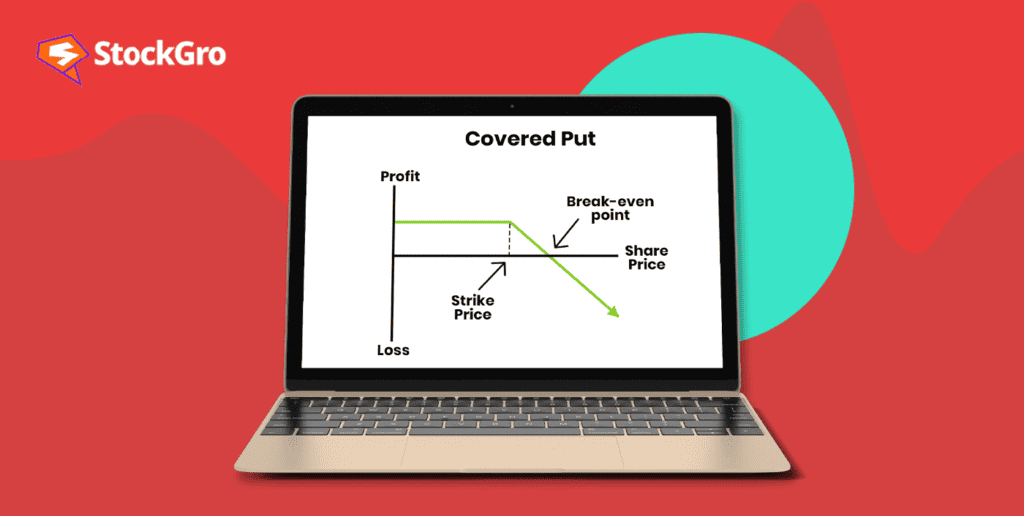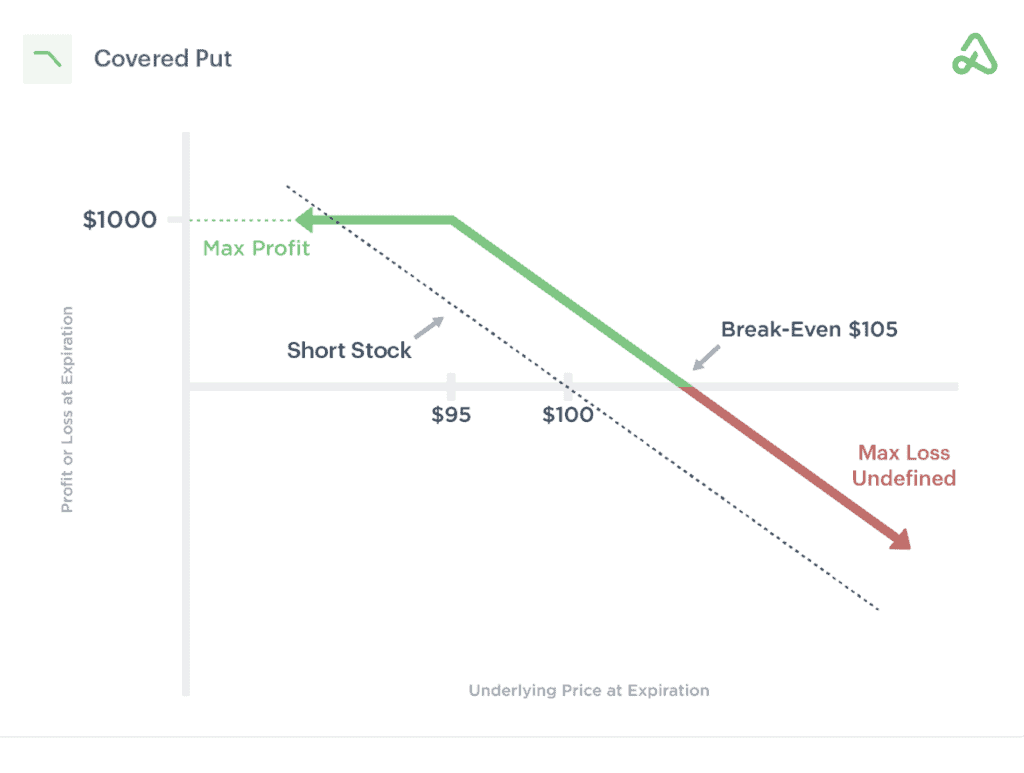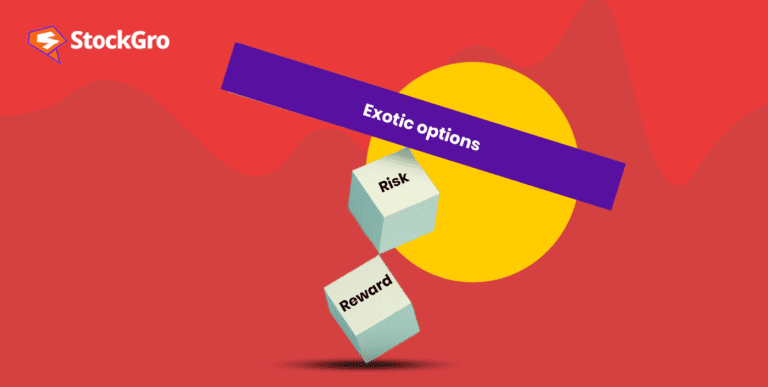
When you’re trading in derivatives, you’re much more exposed to both risk and gain compared to when you’re trading direct stocks. This means that with every trade you make, you’re going to have to be that much more careful.
However, options trading is something that’s extensively covered – both in terms of information on the internet and expert opinions. Sometimes they’re not enough to save you, though. That’s when you need a trading strategy that’s been tested hundreds of times by real traders like you.
In this article, we’re going to explore one of those strategies for trading options called the ‘covered put’ which essentially involves selling a put option of a contract that you shorted. Let’s dive deeper.
You may also like: How to trade in options and maximise your profit?
Understanding a covered put
A covered put, or a cash-covered put, is a strategy that involves you selling an out-of-the-money put option and, at the same time, setting aside the capital needed to purchase the stock at the option’s strike price. By doing this, you acquire the stock at lower than the current market price if the option gets assigned to you.
Here’s how it works:
Have you ever entered a limit order for a stock that lets you buy it below a certain price, but you spend forever waiting for the price to drop to your expected levels? We have too. However, with the covered put strategy, you could make some money while you’re waiting.
By selling a cash-covered put, you can collect the premium that the contract buyer gives you. You get to keep this premium no matter what. So if you don’t get assigned the shares on or before the expiration date, you’re still in the green. However, while you may want to hold on to the stock, you got something for having to wait around for the stock price to drop.

Example of how the covered put strategy works in case of a breakeven point of $105. Also notice how the losses are unlimited while the profit is limited.
Here’s how a covered put strategy works in three different scenarios :
- The price of the stock goes down – A short-term profit is guaranteed to you through the option selling premium. Hence, your net gain would be the difference between the short stock price and the strike price of the put option you sold, plus the premium.
- The price rises – Here, you would make a loss. The loss would equal the difference between the current market price and the shorting price, minus the premium (because you always get to keep that).
- The price doesn’t move – On the off chance that the stock doesn’t move at all, you don’t make any gains or losses. However, the premiums are still a net positive in your P/L.
Also Read: Your ultimate guide to investing in a bear market
The downsides and the upsides
Pros (limited)
When the put option is deep in the money, the maximum gain is limited. This equals the cash that was received once the put option was sold, and any time value in the option when it’s sold. The best scenario you can expect when engaging in the covered put strategy is for the stock price to remain well below the strike price, which means that the contract buyer will exercise the option before it expires and the position will liquidate.
Cons (unlimited)
The maximum loss in a strategy like this is unlimited. The worst that can happen is that the stock price rises sharply after you sell your put option. At this point, the put option becomes worthless and you are left with a short position in a rising market. Hence, there’s absolutely no limit to the amount of money you could lose, since there’s theoretically no limit on how much a stock price can rise.
Using a covered put option strategy
Step 1: Set cash aside for the ‘covered’ part of the strategy
As the put seller, you might be assigned the shares if the option buyer exercises the option. When this happens, you’re the one that assumes ownership of the underlying stock at the strike price. Make sure that you have some liquidity set aside for the transaction to let you prepare beforehand.
Step 2: Selling the put option
This is where you make your premium. Regardless of what happens later on in the trade, you get to keep the premium. Here, instead of buying a stock outright, you get to generate some income and potentially own the stock at a lower price.
Also Read: Take a tour of the economic concept of the ‘liquidity trap’.
Conclusion
A covered put is a strategy where you use your existing stock holdings to sell put options, which generates income and provides you with some downside protection. It’s a strategy you can consider when you’re moderately bearish on a stock, and you want to manage your risk while, at the same time, potentially making extra income from your holdings. However, we encourage you to do your own research as it is important to understand the several risks involved in the covered put strategy.

